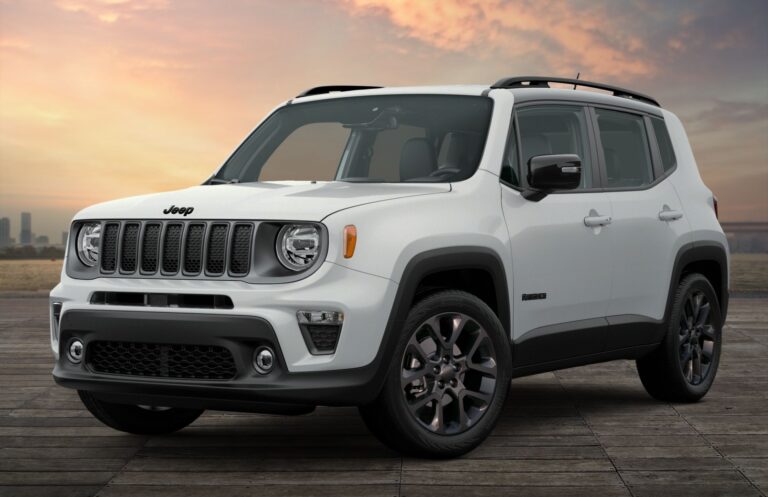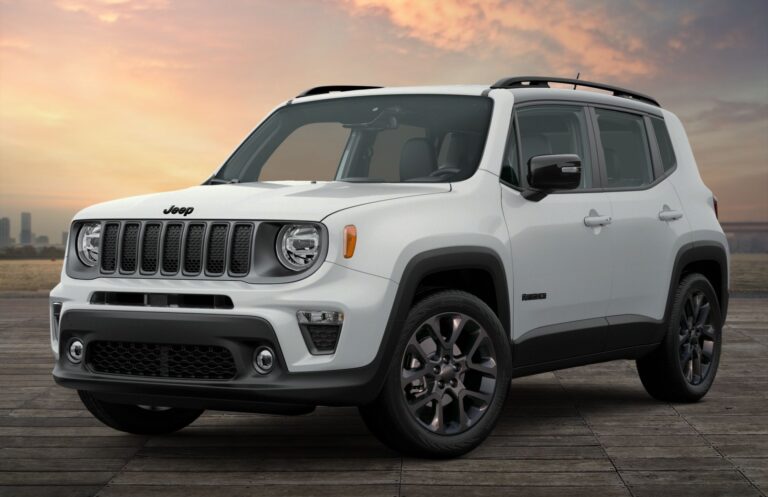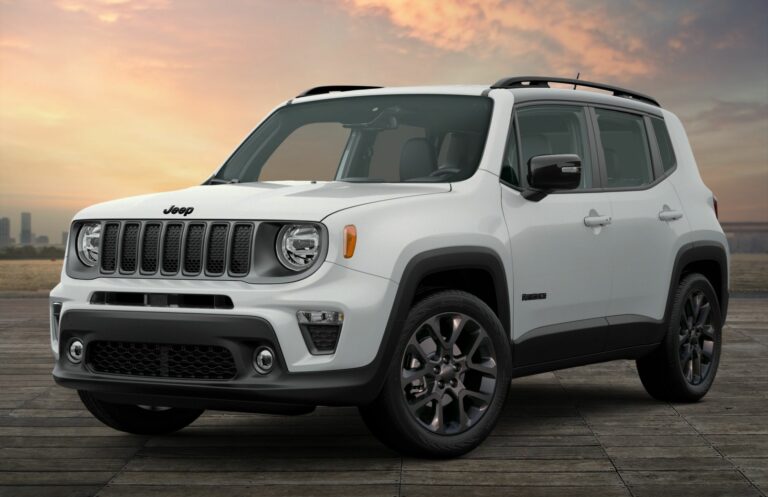4×4 Willys Jeep For Sale: Your Ultimate Guide to Acquiring an Icon
4×4 Willys Jeep For Sale: Your Ultimate Guide to Acquiring an Icon jeeps.truckstrend.com
In the vast landscape of classic vehicles, few command the same reverence and enduring appeal as the 4×4 Willys Jeep. More than just a mode of transport, it’s a living piece of history, an embodiment of rugged simplicity, and a testament to American ingenuity. From its humble beginnings as the workhorse of World War II to its evolution into the beloved civilian CJ series, the Willys Jeep has carved an indelible mark on automotive culture. For enthusiasts, collectors, and adventurers alike, the prospect of finding a "4×4 Willys Jeep for sale" isn’t just about purchasing a vehicle; it’s about acquiring a legacy, a potent symbol of freedom and go-anywhere capability.
This comprehensive guide is designed to navigate the exciting, yet often complex, world of buying a Willys Jeep. Whether you’re seeking a meticulously restored showpiece, a reliable weekend driver, or a challenging project, understanding the nuances of the market, the various models, and what to look for is paramount. Join us as we delve into everything you need to know before you make that iconic Willys your own.
4×4 Willys Jeep For Sale: Your Ultimate Guide to Acquiring an Icon
I. The Enduring Appeal of the Willys Jeep: A Legacy Forged in Steel
The story of the Willys Jeep begins with an urgent call from the U.S. military in 1940 for a lightweight, reconnaissance vehicle. Willys-Overland, along with Ford and Bantam, answered the call, but it was Willys’s design, particularly the "Go-Devil" engine, that ultimately won the contract. The resulting Willys MB (and Ford’s nearly identical GPW) became the quintessential military vehicle of WWII, renowned for its versatility, durability, and robust 4×4 system.
After the war, Willys-Overland capitalized on the Jeep’s popularity by introducing civilian versions. The CJ-2A (Civilian Jeep) was the first, followed by the CJ-3A and CJ-3B, each refining the formula while retaining the core ruggedness. Later, the CJ-5 became one of the longest-running and most popular models.
What makes these vehicles so sought after today?
- Historical Significance: Owning a Willys is owning a tangible piece of history, a vehicle that played a pivotal role in global events and shaped the very concept of the SUV.
- Unparalleled Ruggedness: Built for war, these Jeeps are inherently tough. Their simple, mechanical design means fewer complex systems to fail and easier repairs.
- Off-Road Prowess: With short wheelbases, high ground clearance, and robust 4×4 systems, even stock Willys Jeeps are incredibly capable off-road.
- Simplicity and Maintainability: For those who enjoy working on their own vehicles, the Willys Jeep is a dream. Its straightforward design makes diagnostics and repairs relatively simple, and parts are surprisingly available.
- Nostalgia and Character: There’s an undeniable charm to a Willys Jeep. Its iconic grille, exposed hinges, and no-frills interior evoke a sense of adventure and a bygone era.
- Investment Potential: Well-maintained or expertly restored Willys Jeeps can appreciate in value, making them not just a hobby but potentially a sound investment.


Distinguishing between military (MB/GPW) and civilian (CJ series) models is crucial when searching. Military models often command higher prices due to their historical authenticity, while civilian CJs offer a broader range of options, from early flat-fender CJs (2A, 3A, 3B) to the more common round-fender CJ-5.
II. What to Look For When Buying a 4×4 Willys Jeep
Acquiring a classic vehicle, especially one as old as a Willys Jeep, requires a keen eye and a thorough inspection. Condition, originality, and documentation are paramount.
A. Condition is King:

- Frame Integrity: This is the most critical component. Rust is the arch-nemesis of old vehicles. Check the entire frame rails, cross members, and body mounts for rot, cracks, or questionable repairs. A solid frame is non-negotiable.
- Body Condition: Inspect the body panels (fenders, tub, grille, tailgate) for rust, especially in common areas like floorboards, hat channels (under the floor), and toolboxes. Look for signs of extensive bondo or poor patch panel work. Minor dents are often part of the charm, but structural rust is a red flag.
- Engine and Drivetrain:
- Engine: Willys Jeeps typically came with the "Go-Devil" L-head four-cylinder or the "Hurricane" F-head four-cylinder. Check for oil leaks (some weeping is normal, gushing is not), strange noises, smoke from the exhaust, and overall running condition. Is it original to the vehicle? Many have had engine swaps (e.g., Ford 302, Chevy 350) which can affect historical value but improve drivability.
- Transmission & Transfer Case: Ensure the manual transmission shifts smoothly through all gears (typically 3-speed or 4-speed). Test the transfer case (Dana 18 or 20) to ensure it engages 2WD, 4WD High, and 4WD Low without grinding or excessive noise.
- Axles: Check for leaks around the differential covers and wheel hubs. Listen for humming or clunking noises during a test drive, which could indicate worn gears or bearings.
- Electrical System: Original Willys electrical systems are simple 6-volt setups (some have been converted to 12-volt). Check all lights, gauges, and the starter. Look for frayed wires, exposed connections, or amateur wiring jobs.
- Brakes and Steering: These are critical safety components. Test the brakes for firm pedal feel and straight stopping. Check for excessive play in the steering wheel, which could indicate worn steering box, tie rods, or kingpins. These are common wear items and often need attention on older Jeeps.
- Suspension: Inspect leaf springs for cracks or sag, and shock absorbers for leaks.
B. Originality vs. Restoration vs. Modified:
- Original/Survivor: These vehicles retain most of their factory components and finish. They often show patina but are mechanically sound. They command higher prices from collectors but may still require mechanical refreshing.
- Restored: These can range from a quick repaint to a full, frame-off, concours-level restoration. Ask for documentation (photos, receipts) of the restoration process. Quality varies wildly, so inspect thoroughly. A "fresh restoration" can sometimes hide underlying issues.
- Modified/Resto-mod: Many Willys Jeeps have been modified with modern engines, transmissions, lift kits, bigger tires, and upgraded axles. These are great for serious off-roading or improved daily driving, but they significantly alter the historical value. Ensure modifications are done professionally and safely.
C. Documentation and History: Always ask for the title, registration, and any available service records or historical documentation. A clear title is essential. Knowing the vehicle’s past can provide valuable insights into its current condition.
D. Test Drive Essentials:
- Listen for unusual noises from the engine, transmission, and axles.
- Check for smooth shifting in all gears, and proper engagement of 4×4.
- Test the brakes thoroughly.
- Observe steering play and how the vehicle tracks.
- Feel for vibrations or shudders.
- Note any smoke from the exhaust.
- Ensure all lights and gauges function.
III. Where to Find a 4×4 Willys Jeep For Sale
The search for your ideal Willys Jeep can be an adventure in itself. Here are the most common avenues:
- Online Marketplaces:
- eBay Motors: A wide variety of conditions and prices, but buyer beware.
- Hemmings Motor News: Reputable listings, often for higher-quality or restored vehicles.
- Bring a Trailer (BaT): Curated auction site, often featuring high-quality, well-documented vehicles. Prices can be competitive.
- Specialist Forums & Social Media Groups: Dedicated Willys/Jeep forums (e.g., The CJ2A Page, G503 for military Jeeps) and Facebook groups are excellent resources for finding vehicles, parts, and advice.
- Classic Car Listing Sites: Classics on Autotrader, ClassicCars.com, etc.
- Classic Car Dealerships: Some dealerships specialize in vintage 4x4s and may have Willys Jeeps in stock. They often offer more vetting but come with a higher price tag.
- Auctions (Live & Online): Major auction houses (Mecum, Barrett-Jackson) occasionally feature high-end restored Willys, while local auctions might uncover a hidden gem.
- Word of Mouth & Local Classifieds: Sometimes the best deals are found through networking with other enthusiasts or by stumbling upon a local listing.
- Willys/Jeep Clubs: Joining a local or national club can connect you with sellers and a wealth of knowledge.
IV. Pricing Your 4×4 Willys Jeep: What to Expect
The price of a 4×4 Willys Jeep can vary dramatically based on several factors, primarily condition, originality, model year, and any modifications.
Factors Influencing Price:
- Condition: This is the most significant factor. A rust-free, running vehicle will always command more than a rusty project.
- Originality: Highly original, matching-numbers vehicles are typically more valuable to collectors.
- Model Specificity: Military MB/GPWs generally fetch higher prices than their civilian counterparts, though early flat-fender CJs are also highly desirable.
- Restoration Quality: A professional, well-documented restoration adds significant value.
- Modifications: Tasteful, well-executed upgrades might increase value for a driver, but extensive, irreversible modifications can deter purists.
- Location: Market demand can vary by region.
Estimated Price Ranges for 4×4 Willys Jeep For Sale (General Guidance):
| Model Type | Condition Category | Estimated Price Range (USD) | Key Features/Notes |
|---|---|---|---|
| Willys MB / Ford GPW | Project/Parts | $5,000 – $15,000 | Rust, non-running, incomplete. For experienced restorers. |
| (Military Jeeps) | Driver Quality | $20,000 – $40,000 | Running, functional, but shows wear/patina. May need ongoing mechanical work. |
| Restored/Excellent | $40,000 – $80,000+ | Professionally restored, historically accurate, show-ready. Top examples can exceed $100,000. | |
| Willys CJ-2A / CJ-3A | Project/Parts | $3,000 – $10,000 | Significant rust, non-running. Requires full restoration. |
| (Early Civilian Flat-fender) | Driver Quality | $12,000 – $25,000 | Running, usable, but not perfect. May have minor issues, some rust. |
| Restored/Excellent | $25,000 – $50,000 | High-quality restoration, minimal flaws. Ideal for shows or reliable cruising. | |
| Willys CJ-3B | Project/Parts | $4,000 – $12,000 | Similar to 2A/3A projects. "High-hood" model. |
| (High-Hood Civilian) | Driver Quality | $15,000 – $30,000 | Running, functional, distinct look. |
| Restored/Excellent | $30,000 – $60,000 | Well-restored examples are sought after for their unique appearance. | |
| Willys CJ-5 | Project/Parts | $2,000 – $8,000 | More common, so projects are cheaper. Wide range of conditions. |
| (Longer Production) | Driver Quality | $8,000 – $20,000 | Good for casual driving or light off-roading. Often modified. |
| Restored/Excellent | $20,000 – $45,000+ | Clean, well-maintained or restored. Can include tastefully modified examples. |
Hidden Costs: Remember to budget for additional expenses beyond the purchase price:
- Transportation: Shipping a vehicle can be expensive.
- Immediate Repairs: Even "driver quality" vehicles often need immediate attention.
- Parts: Budget for regular maintenance and potential replacement parts.
- Insurance: Classic car insurance can be affordable but needs to be factored in.
- Registration/Taxes: State-specific fees.
V. Owning and Maintaining a Willys Jeep
Congratulations, you’ve found your Willys! Owning one is a unique experience, but it comes with its own set of characteristics and maintenance considerations.
- Parts Availability: Surprisingly, parts for Willys Jeeps are readily available. Numerous online retailers specialize in vintage Jeep components, from body panels and engine parts to electrical components and reproduction items. The simplicity of their design also means many components are interchangeable across models or can be sourced from general auto parts stores.
- Maintenance Tips:
- Regular Fluid Checks: Oil, transmission, transfer case, and differential fluids.
- Grease Points: Willys Jeeps have numerous grease fittings on the chassis, steering, and suspension. Regular greasing is vital.
- Ignition System: Points, condenser, spark plugs – keep them clean and adjusted.
- Cooling System: Ensure radiator is clean and coolant is fresh. Overheating can be an issue in hot climates or during heavy use.
- Rust Prevention: Keep it clean and dry, especially after off-road excursions. Consider rust inhibitors.
- Driving Characteristics:
- No Power Steering/Brakes: Be prepared for a more physical driving experience. Manual steering requires effort, especially at low speeds, and drum brakes require foresight.
- Slow & Steady: Willys Jeeps were not built for speed. They are best enjoyed at a leisurely pace, typically cruising comfortably at 45-55 mph.
- Noisy & Open: Expect engine noise, wind, and road noise. Many don’t have full doors or roofs, adding to the open-air experience.
- Community and Support: The Willys Jeep community is vibrant and incredibly helpful. Joining online forums, local clubs, and attending events provides a network of knowledge, parts sources, and camaraderie. You’ll find experienced owners eager to share tips and assist with troubleshooting.
- Insurance Considerations: Look into specialized classic car insurance, which often offers lower premiums and agreed-value coverage, better suited for unique vehicles like a Willys Jeep.
VI. Frequently Asked Questions (FAQ) About 4×4 Willys Jeep For Sale
Q: Is a Willys Jeep a good daily driver?
A: Generally, no. While some owners use them regularly, Willys Jeeps lack modern amenities, safety features, and highway cruising capabilities. They are best suited for weekend adventures, short trips, or as a secondary vehicle.
Q: Are parts hard to find for Willys Jeeps?
A: Surprisingly, no. Due to their popularity and simple design, many aftermarket companies and specialized vendors offer a wide range of reproduction and original parts. Common wear items are readily available.
Q: What’s the main difference between a military MB/GPW and a civilian CJ?
A: MB/GPW (military) models were designed specifically for wartime use, with features like blackout lights, specific tool indents, and military markings. CJ (civilian) models were adapted for commercial and agricultural use, with features like tailgates, full windshields, and often a more robust electrical system. While visually similar, they have distinct differences in detail and historical significance.
Q: Can I get modern power steering/brakes for a Willys Jeep?
A: Yes, many owners upgrade their Willys Jeeps with modern power steering kits, disc brake conversions, and even modern engine/transmission swaps to improve drivability and safety. These modifications can impact originality but significantly enhance the driving experience.
Q: What’s the best Willys model for off-roading?
A: All Willys Jeeps are inherently capable off-road. The early flat-fender CJs (2A, 3A, 3B) are highly maneuverable due to their short wheelbase. The CJ-5 offers a slightly longer wheelbase and often more readily available upgrade parts, making it a popular choice for more serious modifications.
Q: How much does it cost to restore a Willys Jeep?
A: Restoration costs vary widely depending on the initial condition of the vehicle and the desired level of finish. A full, professional, frame-off restoration can easily cost anywhere from $20,000 to $60,000+, sometimes even more for concours-level work. DIY restorations can be cheaper but require significant time, tools, and skill.
Conclusion: Embracing the Willys Legacy
The search for a "4×4 Willys Jeep for sale" is more than a transaction; it’s an initiation into a passionate community and a journey into automotive history. Owning a Willys is about embracing a no-frills, authentic driving experience that connects you directly to a bygone era of rugged simplicity and unparalleled utility.
Whether you choose a battle-hardened military model or a charming civilian CJ, remember to approach your purchase with thorough research, a meticulous inspection, and realistic expectations regarding its condition and capabilities. The Willys Jeep isn’t for everyone, but for those who appreciate its unique character, historical significance, and legendary capability, it offers an incomparable sense of adventure and pride. By following the guidance in this article, you’ll be well-equipped to find and enjoy your very own piece of motoring legend. Happy hunting!




